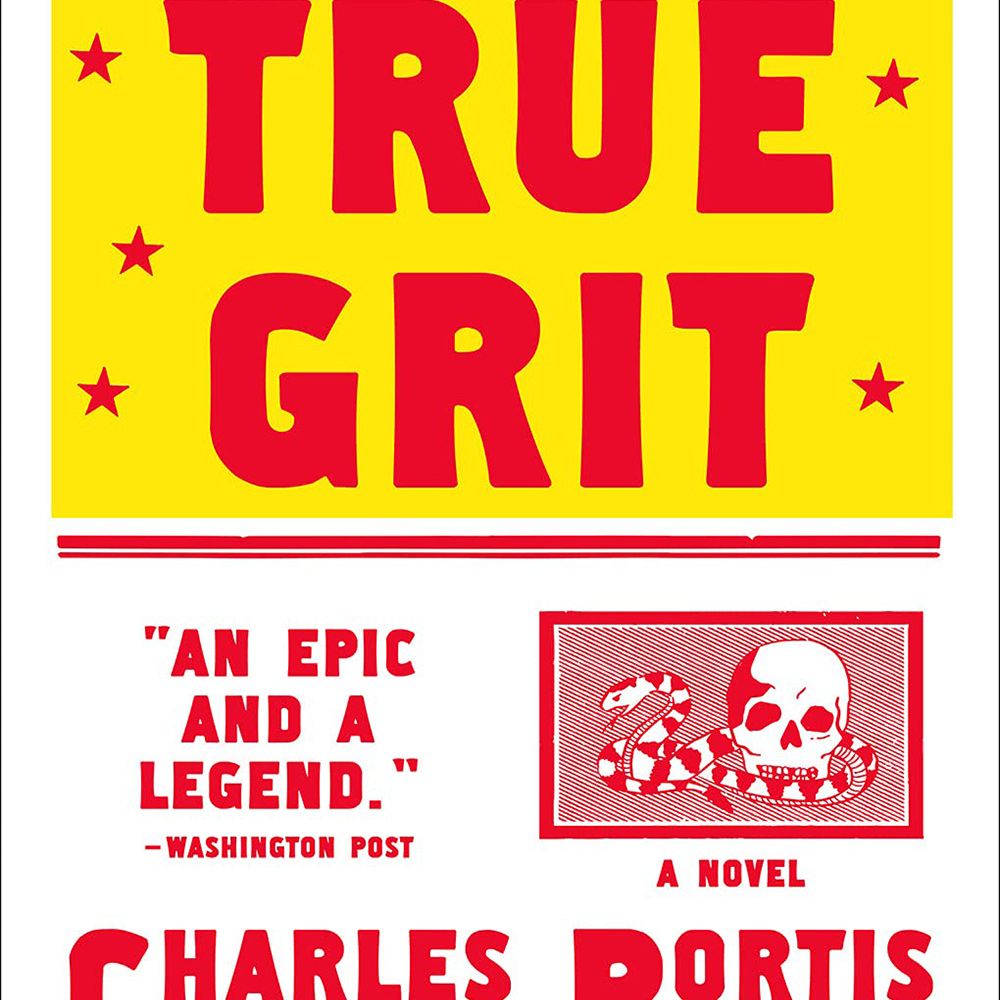
True Grit by Charles Portis
True Grit by Charles Portis is the classic western novel narrated by protagonist Mattie Ross, first published in 1968, that was made into two classic movies (one starring John Wayne from 1969 and a second starring Jeff Bridges from 2010). The book description from the publisher describes it best: “True Grit tells the story of Mattie Ross, who is just fourteen when the coward Tom Chaney shoots her father down in Fort Smith, Arkansas, and robs him of his life, his horse, and $150 cash. Filled with an unwavering urge to avenge her father's blood, Mattie finds and, after some tenacious finagling, enlists one-eyed Rooster Cogburn, the meanest available U.S. Marshal, as her partner in pursuit, and they head off into Indian Territory after the killer. True Grit is essential reading, an undeniable American classic as eccentric, cool, funny, and unflinching as Mattie Ross herself.”
I read this novel immediately after reading another novel I loved by Portis: The Dog of the South. The two novels couldn’t be more different. The Dog of the South is irreverent, quirky, and takes place around the time of its publication (1979); True Grit is deadpan, an adventure of revenge with camaraderie between a ragtag crew, and takes place in 1878. Told by Mattie Ross as an old woman, recounting the time when she was 14 and sought retribution for the murder of her father by a scoundrel, Tom Chaney, her deadpan delivery probably springing more from her older perspective than the younger. But, it’s fun to envision this 14-year old speaking to codger Rooster Cogburn and a flashy Texas Ranger named LaBoeuf (pronounced La Beef) in her dry, matter-of-fact way. The story immediately begins with Mattie’s recounting of her father’s unfortunate murder by the hands of a drunken Tom Chaney, and she leaves home to procure a marshal to bring Chaney to justice in Arkansas. She desperately wants revenge and to see Chaney hung for his crime. After asking around to folks all too confused about a child commandeering a marshal, she picks Cogburn, as he’s described as the meanest of all the marshals, and the man she believes to have “true grit.” They reluctantly team up with LaBoeuf, who is also hunting Chaney.
The real pleasure of this story is watching the relationship between these three, very different characters who, at first, don’t want to work together as a team, but reluctantly do so. Over time, they all discover that each of them is fully capable of bringing Chaney to justice when they work together. Rooster and Mattie especially build a close camaraderie as they get to know each other in the wild country. Portis’ writing style is terse and lean. There is some humor when the characters speak to each other in their deadpan euphemisms, although this book isn’t laugh-out-loud funny like The Dog of the South. But where both books are similar is with Portis’ excellent dialogue, which is funny, vibrant, and rings true-to-life. Portis is a master at dialogue and I can see why True Grit was adapted into two films. If there is a downside to this novel, it’s the loose structure of chapters, some of which stretch to 70 pages in length, too long in my opinion, but this is a small quibble. Side note: the novel is way more violent and gory than either movie depicts, but this is appropriate for this type of revenge story.
I thoroughly enjoyed this book and I highly recommend it. I would give this book 4 and 1/2 stars.
Buy the paperback on Bookshop: https://bookshop.org/a/152/9781590204597

